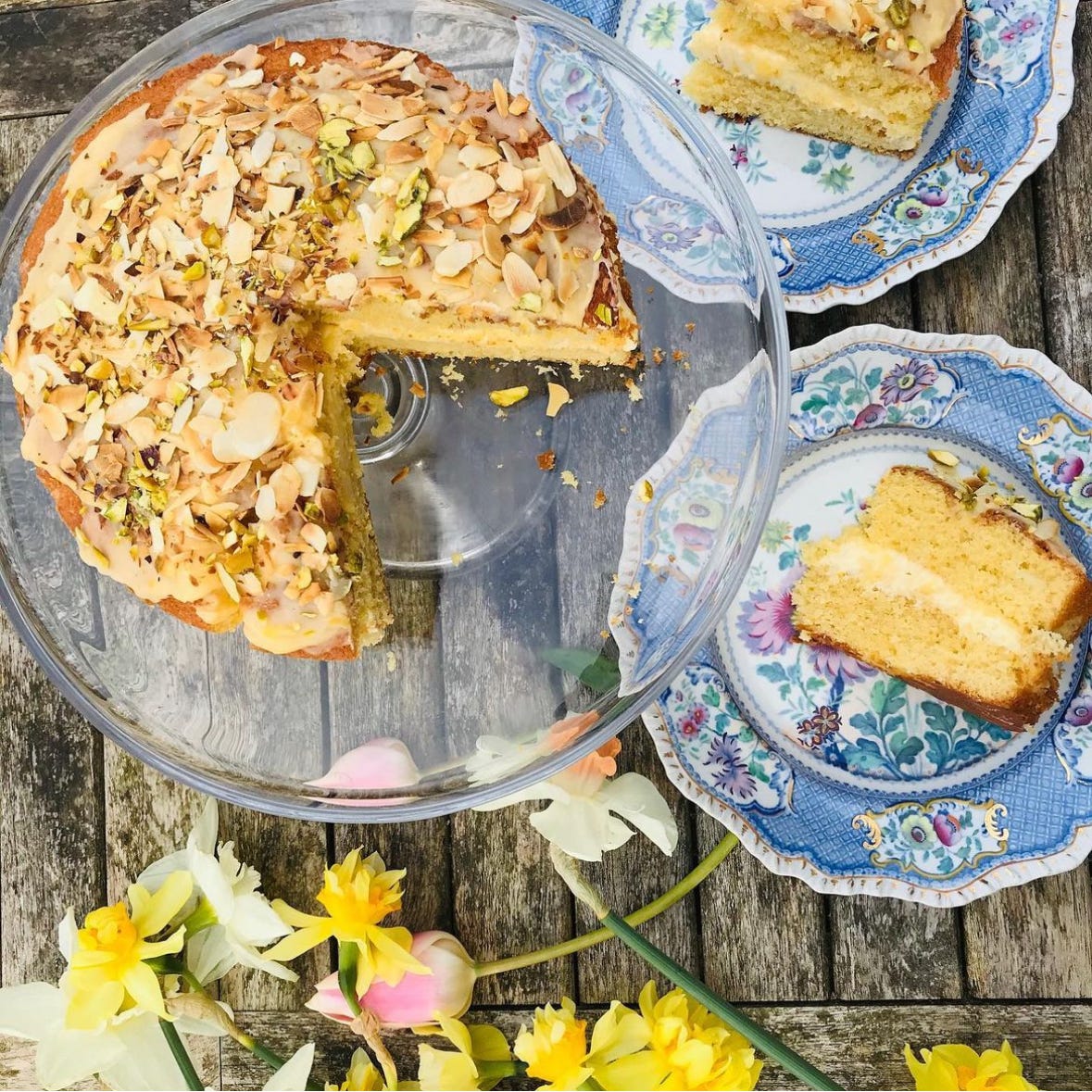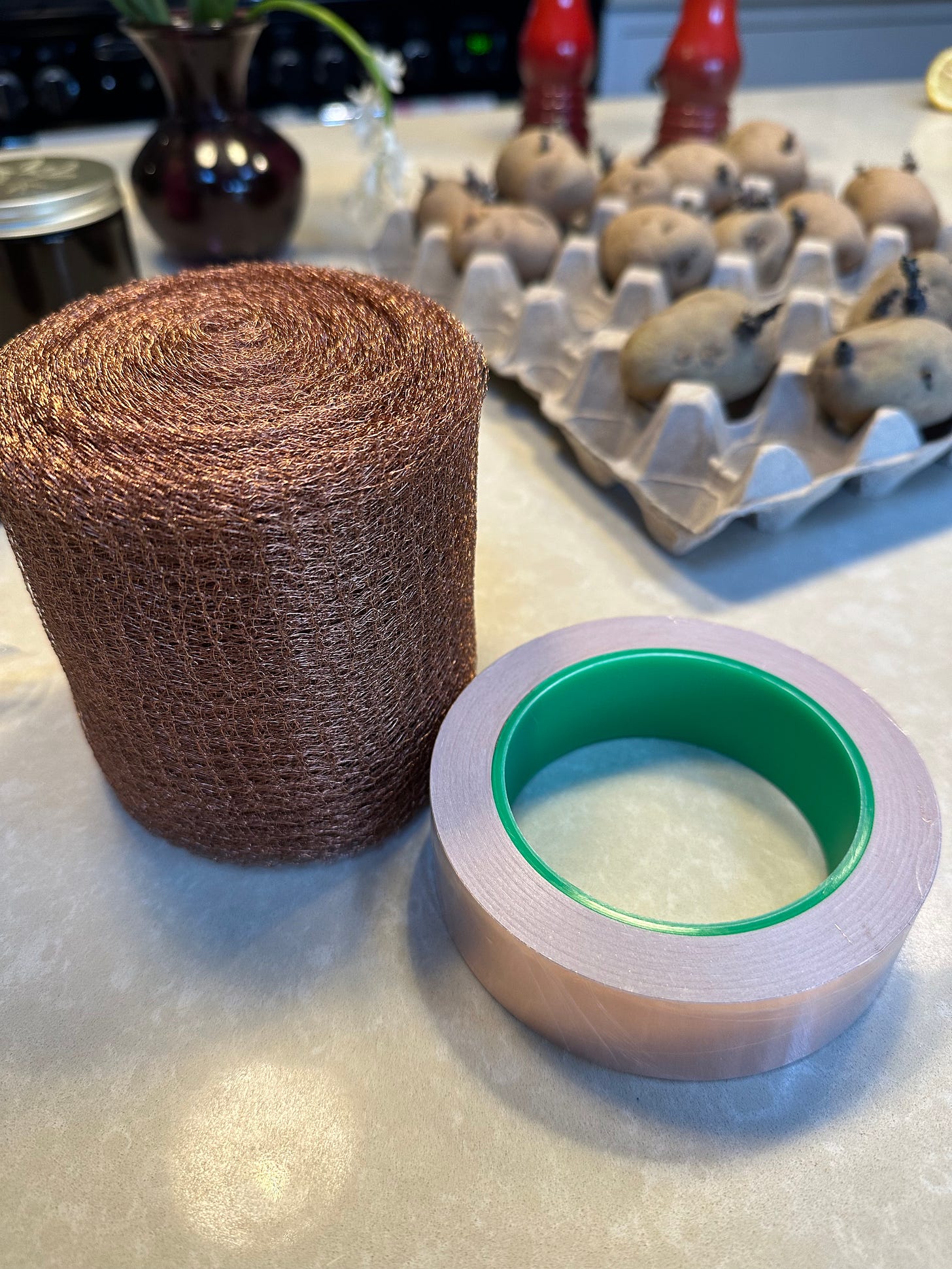Did you know that a family of young bluetits eats 500 caterpillars a day? A ladybird daily munches around 500 aphids, whilst a hedgehog can get through 500 slugs in one sitting?
Wildlife is just one of the areas we look at in the How to Garden series. Full of practical advice and back to basics, there’s always something for everyone: we look at biodiversity, caring for the wildlife that visits our garden: sustainability and biodiversity shouldn’t be separate, stand-alone gardening categories, they’re as fundamental a part of gardening as planting flowers and pruning trees.
As I wrote in last week’s letter:
No chemicals are used in my garden, and the baby bluetits thank me for this as they arrive to strip the aphids from the roses.
Earlier this week, I posted a snippet of this video - I’m pretty sure it’s a Great Tit but will stand corrected by all of you who know way better than me - and I thought you’d like to see the whole thing: I recommend it as a mesmerising bit of meditation to accompany your first cup of coffee.
And the 4-pronged slug defences? Well, here are two of the defences: the slug fence and copper tape have arrived:
I’m just waiting for the wool pellets, and these will be added to by the slug traps. I’m never going to get all of them, and I hope that the hedgehog will do the rest. I live in optimism, for that’s what gardening is all about, as so many of you said here:
We invest a bit of energy, a bit of hope, in planting a bulb, a funny brown thing, perhaps slightly withered or a bit wrinkly. As the draggiest days of the year haul and lumber themselves by, the bulbs seem to be sitting tight, forgotten under the soil. But then…. that joy as their noses start poking up inquisitively out of the earth. And when the most exquisite of flowers start to bloom, improbable beauties, delicate and fragile, strong and resilient…. the year seems to get itself back into gear again.
We’ll be talking about all this and more in today’s Find your way around Substack and The Gardening Mind Zoom - the link is at the end of this post. Please do join us, whether you’re an interested observer or whether you’ve a question you’d like to ask about how to navigate the newsletter. It’ll just be for 30 minutes or so, although some of us may stay a little longer as the conversation continues…
This Zoom is for paid subscribers - your support of 92p a week means that I can write it, so if you’re teetering on the edge of subscribing, maybe today will be the day? We’d all love it if you joined us in the Zoom later today - it’s honestly the friendliest bunch of people!
And now, for the first time ever on The Gardening Mind: a recipe!
If you’re new here, I can assure you that you are in the right place: we’re normally looking at gardens and gardening, but just occasionally, The Gardening Mind goes on a bit of a wander…..
Well, kind of a first: I did share my way of making Melba toast, but I’d hardly call that a recipe. This week, I’m really going for it, with a recipe which appeared in Rhubarb Rhubarb.1
In the run-up to Easter, I’ve been thinking about cooking as well as gardening, and I remembered this delicious Easter cake. For all my lack of adroitness at making a table look spit-spot, I do get very over-excited at the thought of rustling up a festive decoration or two. So I’m rooting out the slightly bedraggled, stick-legged, almost fluff-less tiny yellow chicks, and decorations for the Easter Tree – by the way, what IS that all about?
For some reason, as a teenager I always wanted to make a Simnel cake. I remember tearing the annual Easter recipe article out of my mum's Good Housekeeping magazine and planning one day to feed my own family with it, as no one at the time would touch it. As things have turned out, no-one here will ever touch it either - I have to admit the effect of the whole marzipan/ball combo isn't really what you'd call mouthwatering. Do you have any ideas for a good Easter-ish teatime cake which people will actually eat?
Mary Jane Paterson, my co-author, writes back:
The point about an Easter cake in my mind is that it shouldn’t be chocolate
We’ve consumed/nibbled/inhaled so much chocolate on the day, the last thing anyone can face is a chocolate cake. So here instead is a recipe for a rather delicious almond and lemon cake. I’ve added homemade thick and scrumptious lemon curd on top and then scattered roasted pinenuts all over it.

This cake is honestly absolutely delicious: the lemon flavour makes it taste so fresh. It has a really Eastery feel to it and if you can only manage a tasting of it on Easter Sunday, it really is fantastic for breakfast with a cappuccino.
If you’ve looked at this recipe already, you’ll see I’ve edited the quantities a bit!
Almond and lemon cake with lemon curd and toasted pinenuts
225g/ 8oz unsalted butter
225g/ 8oz ground almonds
225g/ 8oz caster sugar
3 eggs
Zest of 2 lemons
Juice of 1 lemons
110g/ 4oz plain flour
1 tsp baking powder
A pinch of salt
Use a 9 inch (23cm) loose-bottomed tart tin and grease with a bit of butter
To prepare the lemon curd (makes 450g – about a large jar-full):
2 large lemons
85g/ 3oz unsalted butter
170g/ 6oz granulated sugar
3 eggs, lightly beaten
Preheat the oven to 160°C. Mix the butter and sugar until pale and light. Stir in the ground almonds then gradually beat in the eggs. Fold in the lemon zest, lemon juice, flour, baking powder and salt. Spoon into the prepared tin and bake for 50 minutes.
To make the lemon curd for the topping, grate the zest of the lemons and squeeze out the juice. Put the lemon juice, butter, sugar and eggs into a heavy saucepan and stir constantly over a low heat until the mixture is thick. It takes quite a long time and can look like it's not working - it probably is, so just be patient. Pass the mixture through a sieve and stir in the lemon zest. Leave to cool and smear generously over your cake. Toast your pine nuts (the most perilous part of the recipe) and scatter on top.
I’ll also be making a traditional Neapolitan Easter pie, the pastiera, which is sweet and tasted like perfumed solidified rice pudding. Having said all that, it’s absolutely delicious. I’m a big fan of cakes and puddings that have something damp about them.
I’ll share the results with you after Easter, but in the meantime, here’s a photo of what it’s supposed to look like:
Tempted?
With that thought, I’ll sign off, and look forward to catching up tonight. Here’s the Zoom link for Tuesday 26th March at 6pm UK time:









